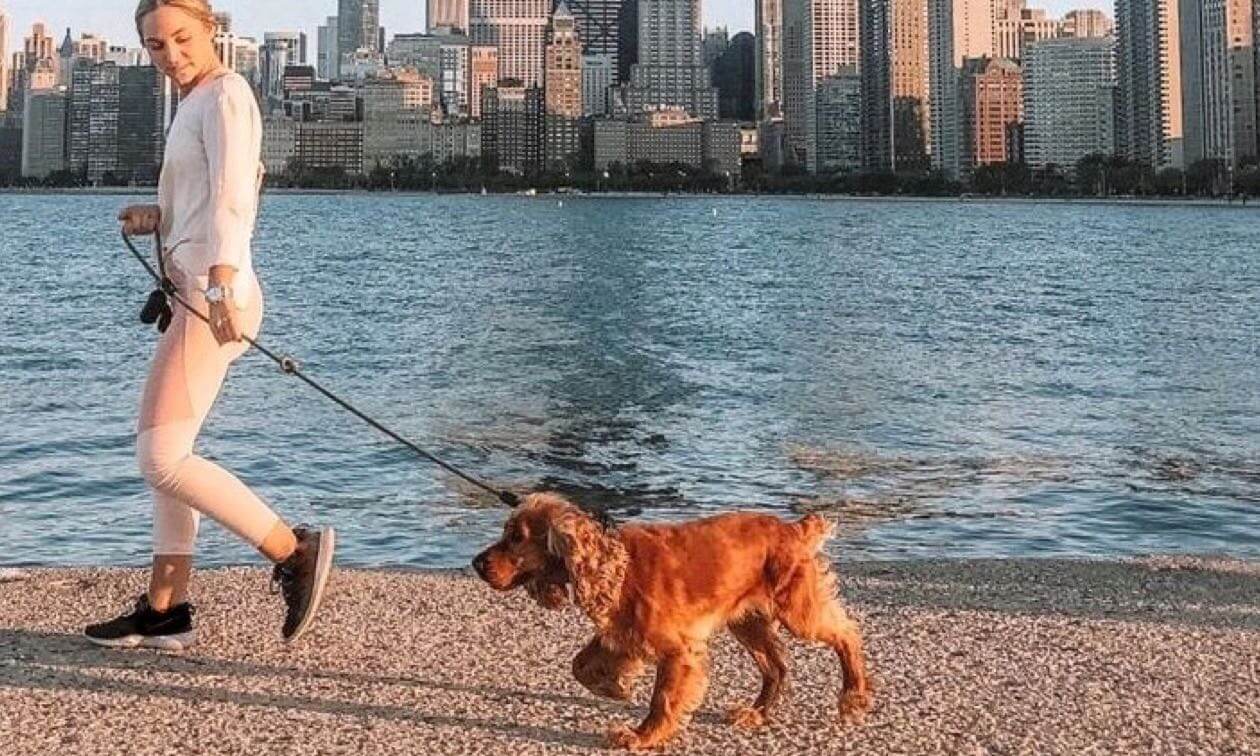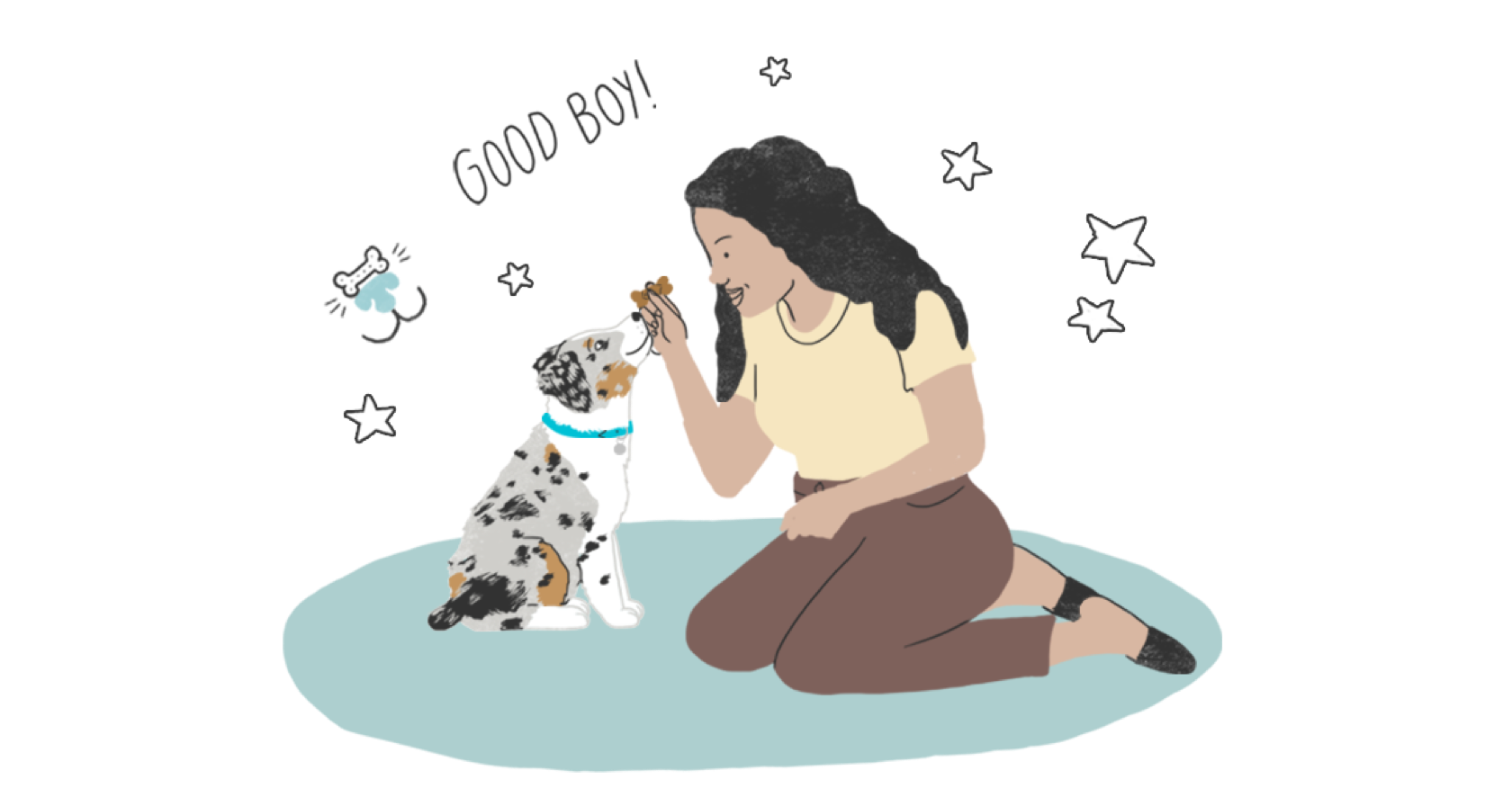Just because you’re waiting for your puppy to finish all their vaccines before heading out for walks doesn’t mean that you must wait to introduce your puppy to learning beginning leash manners. Learning how to leash train a puppy indoors or in your yard sets you up for training success and lifelong leash manners. When the time comes to leash train a puppy, these training games to make walking on leash fun for both you and your pup.
Getting Dressed
Start with helping your puppy get used to wearing a collar or harness and a leash. It’s a new thing for them and can feel quite different when they’re used to being “naked.” You want them to learn that when you grab their leash, it means awesome things are going to happen.
- Show them their walking gear and give them a treat.
- If they sniff or touch the leash with their nose, reward them with a treat.
- Work up to being able to clip the leash on and off their collar or harness, rewarding them for staying (mostly) still.
If they get mouthy and try to play tug with the leash, redirect them to a tug toy and try the get dressed game later when they aren’t as excitable. If you’ve been teaching them the sit cue, you can incorporate that into this process as well.
The Name Game
Teaching your puppy to look at you when you say their name is helpful for a variety of skills. Not only can getting and keeping their focus help prevent them from rushing to the end of the leash, but it can also act as an easy substitute for recall and leave it cues.
- Say your puppy’s name in a happy tone of voice when they are indoors, close by, and not overly distracted.
- If they look up at you, reward them with a treat, praise, or play.
- If they don’t look up at you, don’t repeat their name (this is the hardest part of this game!). Instead, clap your hands, make kissy noises, or otherwise entice them to look your way with movement and excitement. When they look at you, reward!
- Practice this game throughout the day, in different rooms, around different distractions, or in your fenced yard.
When you’re walking your puppy on leash, use this skill to your advantage to prevent pulling from happening in the first place. If they’re about to pull, say their name to get their attention and reward them at your side. If they stop to stare at that squirrel, get their focus back on you before they charge ahead to chase.
Silky Leash
This game introduces your puppy to how the leash tells them which way to go. Start inside your home and be ready with some of your pup’s favorite treats.
- Clip the leash onto their collar or harness.
- Hold the leash on one side of your puppy and apply very light pressure* in that direction.
- If your puppy moves in the direction of the leash pressure, even if it’s just leaning that way or one step, say yes (or click if you’re clicker training) and give them a treat.
- Switch the leash to the opposite side and repeat.
- Practice this for just a few minutes at a time, keeping it fun and positive.
*Pressure on the leash should be extremely light. One trick is to just use one finger to lightly lift the leash rather than your entire hand. Do not pull, yank, pop, or jerk the leash. This game is meant to teach your puppy that any tension on the leash is a cue to move in that direction. This helps prevent what’s often called “opposition reflex,” the tendency to pull against or away from pressure.
Follow the Leader
This game is all about teaching your puppy that walking next to you is an incredibly rewarding choice to make. You can play this indoors or outdoors in a fenced yard, and no leash is required. This is also a great training game for children to play with a puppy.
- Have a treat pouch stocked with your puppy’s food and treats. Decide on whether you want your puppy to learn to heel on your right or left side.
- Start walking briskly around the room or yard. The faster you walk, the more exciting you are for your puppy to follow.
- When your puppy shows interest in what you’re doing and catches up to you on the side you’ve determined, say yes or click, and give them a treat on that side, right next to your leg.
- Keep walking as you do this. If your puppy continues to walk at your side, say yes or click again and treat.
- If they fall behind or get distracted, that’s okay! Change directions or mix up your speed to encourage them to catch up to you. This game is all about not giving your puppy a verbal cue; instead, you’re capturing their choice to walk at your side with a marker word or clicker and rewarding with a treat.
The more you practice off-leash heeling, the better your puppy will be when they’re on leash!
Training your puppy to walk on leash without pulling or dragging behind takes practice, time, and patience. After your puppy has completed their vaccinations, start to play these games just outside your home, walking around the block, and then start to extend the distance or change up the environment. It’s easy for your puppy to get distracted by all the different smells and sights, so keep it easy at first to build a strong foundation.
Remember to keep an eye on your puppy’s energy level as you start to go on longer walks. If they show signs of getting tired, like plopping down, panting, or moving more slowly, it’s time to head back home. If you’re finding that walks are getting stressful or frustrating (for you or your puppy), it’s okay to go back to the basics and practice more indoors or in your yard. If you’re struggling with leash walking, find a certified professional dog trainer to help you and your puppy succeed.
ZPC-01787R1



